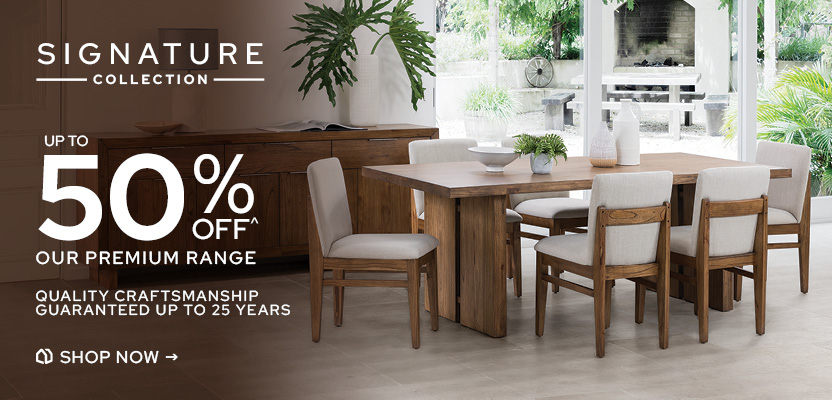If you want to get a stylish look for your home, imagine you are a designer.
In their toolbox, besides the website or address of a furniture store that delivers good looks for a good price, is a very simple tool – a measuring tape.
Because, let’s face it, a pro doesn’t buy a sofa or a table that overwhelms a room, or doesn’t fit through the door. At the same time, measuring a room properly – whether that’s indoors or outdoors – may also help you to realise you do have space for that the stunning sofa you had your eye on after all.
- Measure entries & passages
- Measure your room
It may seem obvious but the number one mistake people make when buying furniture is not measuring points of entry. The result: they buy furniture they can’t actually get into the house, or onto a patio or deck.
Be space smart and measure all the doors or passages your furniture will have to pass through on its way into position.
Measure the height and width inside the door frames and note any light fittings. Be especially cautious of any corners of staircases, as these can make movement of larger pieces of furniture difficult to impossible.
Once that’s sorted, it’s time to measure the room in which the piece will be located. You’ll need to measure the following:
- Length of the room (entrance to the far wall)
- Length and width, and height of the walls
- All other objects including windows, heaters/fireplaces and other objects which may make moving your furniture difficult
Remember, going up, instead of out, with pieces like the Miko Cube Unit, is always going to mean you can fit more pieces in a room.
While you’re at it, remember to note the actual size of the piece of the furniture itself, so you can see where it will fit into a room you just measured.
If you want to get clever, you can either draw up a plan of your room, or mark out the size of the furniture with masking tape on the floor to get a feel for how much space the sofa will take up.
Choosing a dining table right for your home
Do you entertain often, or do you like to use your dining table for work, or for kids to read or draw?
Knowing what purpose your table will serve will give you a guide to the size you need.
At the same time, knowing how often you’ll use your table will help you decide whether to place it in a prominent position, or out of the way.
Consider the shape of your table too and whether round, square, oval, or rectangular will sit better in the space, or fit the purpose more easily. For example, the round Joy Outdoor Dining Table , made from UV-resistant wicker and sturdy steel, is perfect for a chic and comfortable patio but a rectangular table such as the Boatwood, in a pewter brushed finish, is the perfect way to set the scene for dinners with family or friends in the dining room.
Choosing a table or a sofa that will grow with your family
Dining tables and sofas are major purchases and buying one that will adapt to your changing needs will, ultimately, save you money.
An extendable table like the La Salle, constructed from American oak and rubberwood, grows with you.
A chic two-seat sofa like the Madeline, that also turns into a bed can prove useful when friends stay over or buy a stylish modular lounge, which can be moved around and will accommodate your family as it grows.
How to bring it all together
Once your furniture is set up, take the next step and consider interior decoration and styling. Here’s some food for thought:
- Vases and sculptures are an ideal way to introduce an accent colour, or tie in with one. Make sure the style is simpatico i.e. modern or retro, depending on your room.
- Rugs connect a space to create zones in your home as well as add texture and warmth. They can also be used to great effect outdoors.
- Lanterns throw a different kind of light to overhead lighting and make the space more interesting or more intimate. Lanterns in a durable material, for example, glass, look beautiful on an outdoor deck.
- Plants connect you with nature and bring a sense of calm, as well as the exotic, to a space.
- Updating cushions can update your whole look. The rule with cushions is to always use odd numbers.














